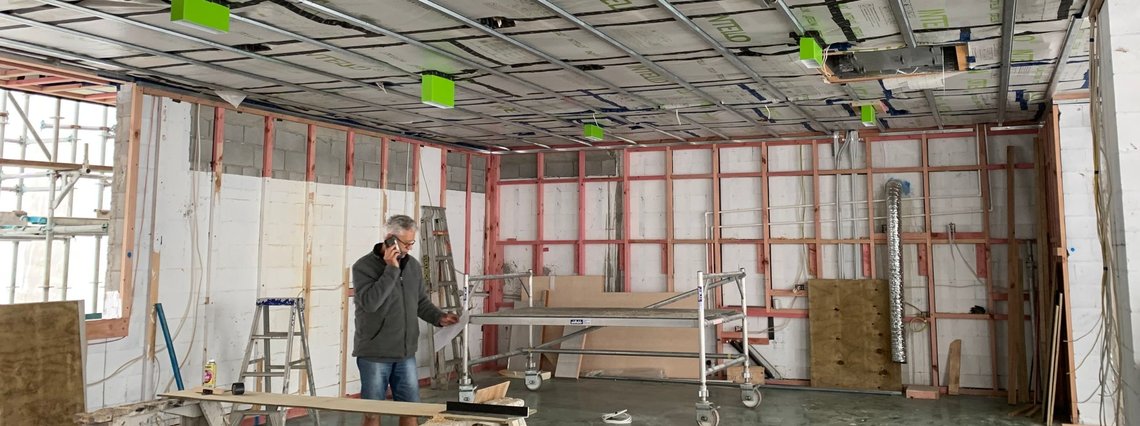Jon Davies
August 22, 2018


In this article, I’m tackling real-estate adverts, renovation by paint, and discussing one area of cost for whole-house renovation and the connection between health and wealth.
In the previous article, "Achieving Winter Warmth in New Zealand Homes", I made claims about house performance after renovations—making homes more accessible to heat. In this article, I’m tackling real-estate adverts, renovation by paint, and one area of cost for whole-house renovation, as well as the connection between health and wealth.
If you’ve ever heard the term "Resene Renovation" or "Dulux do-up", hopefully, you’ll understand the target. The target of criticism is not the paint company; it’s the renovator who thought that covering up a mess with paint could be called a renovation. We’ve all seen the adverts "Renovated to a high standard" where the only work was a bathroom tidy-up and a paint job. The net result is a sale for some extra dollars but the same level of performance (low) and outcome (poor) as before. True renovation is a very infrequent opportunity to improve the building, not just the visible skin.
Beyond this, "paint renovation" is a similar claim in advertisements stating "fully renovated", which usually means insulation has been put in the ceiling and under the floor. What the advert might more accurately state is: "Fully insulated where we could easily reach."
So, what is my beef with this? Well, it certainly is not against insulation, but we should all be for insulation being installed with purpose. One of the websites for Brits looking to emigrate to New Zealand has some pretty embarrassing statements about the state of the homes immigrants can expect to live in here. It warns:
If you’ve bought a garden shed masquerading as a family home, you can insulate it, double-glazed it and install central heating to make it equivalent to a home in another developed country. It will cost plenty of money, but until you’ve lived (and frozen) in one of these old New Zealand houses, you can’t truly appreciate the value of these improvements. (8 Must-Knows, ENZ).
So, how should we address this?
Insulating, double glazing and installing heating/ventilation systems. Of course, these do not come for free, but then neither does healthcare, and we have one of the highest rates of respiratory illness… but I digress. We promote deliberate airtightness with the use of Smart Vapour Retarders (ours is called INTELLO®), and this costs money. So let’s balance some costs. If ‘better insulation’ means choosing a higher R-value product, that sounds good, but it might not have the expected gain (or bang for the buck).
Let’s consider the insulation cost for a 90mm stud wall:
R2.6 costs approx $11/m² retail R2.8 costs approx $17/m² retail The cost difference is around $6/m², but the performance gain is only around R0.1 (yes, that is rough performance maths) Why twice the price? The density increase means using ‘twice the amount of fibre’. The shipping costs increase because the higher-density product does not compress nearly as much (volume is, therefore, higher). And it’s slower to install because it is harder to cut and fit accurately. Ultimately, the gain in performance (R0.1) is not worth it. So, how do we gain the performance of insulation? By enclosing it fully with airtightness membranes or products.
R2.8 + air leaking through might result in a real performance of R2.0 or less R2.6 + air leaking through might result in a real performance of R2.0 or less R2.6 with airtightness = R2.6 (with the reduction due to framing members if insulation is installed between studs) Doing this step is likely to be close to cost neutral with $17/m² but with performance improvements due to still air in the insulation (so R2.6 behaves like R2.6 in the test lab) and the control of internal air volume — it is unable to bleed out through gaps and cracks in the envelope.
So, what am I promoting? Fix the performance of the building's shell. A nice Resene paint job is great if the building's envelope is working well.
When putting interventions in a priority order, the last thing to consider might be PV (photovoltaic) panels. “[Consider PV panels] when the initial load is reduced.” (Enveloped.co.nz)
Renovation work is an infrequent opportunity to improve the health outcomes of occupants, and health is wealth. Health is wealth monetarily, socially and spiritually. Being at work and not at home sick or looking after sick children is wealth — wealth in earnings, advancement and social connection. Funnily enough, it’s good for children to be at school for their future earnings, advancement and social connections.
Health is wealth in capacity for engagement with community groups — church, arts and sports for example. Funnily enough, it’s good for our mental wellbeing too.
Health is not everything, but without health, everything is nothing, Arthur Schopenhauer (1788-1860)
A thermally insulated, airtight building envelope plays a major role in determining how comfortable and pleasant an indoor environment is for us and how well we can work, learn or relax there. The air temperature has the strongest effect on our perception of comfort level: a temperature range of between 20 °C and 23 °C in homes is regarded as comfortable in winter, while temperatures of up to 26 °C are perceived as pleasant in summer. In this context, airtightness has a crucial influence on the effectiveness of thermal protection in both winter and summer.